When I was 11, I found an erotic comic that turned me into the most rapt art history student any museum could ask for.
As I remember it, a refined woman receives a literal package in the mail: a reproduction of Michelangelo’s David, but with a fully erect penis. Eager for a good fuck, she hops onto that marble dick and rides it — and the following night, the statue comes to life as a Ken Doll hunk.
That anthropomorphized Renaissance cock — seared into my hormone-addled tween memory — ruined any chance I had of visiting the Metropolitan Museum of Art without getting horned up (even as a grown-ass woman this time). More recently, the culprit was the juicy marble asses on New York’s finest collection of nude male sculptures. The artists who built those wagons seemed to pay infinitesimally close attention to detail; their structure, density, firmness and hemispherical perfection lured me in.
As I found out, those cabooses were designed to provoke a specific and complex response. Through my research, I’ve examined the common thread that links masculinity to classical art, modern homoerotic art and, yes, Nazi ideals of beauty: a unique dynamic of beauty, sexuality and power. What else could I expect when the ideal male body abides by such stringent rules of strength, virility and purity?
There’s a long history of tantalizing male ass throughout the annals of human artistic achievement, but unfortunately, not all of it represents good-natured, sex-positive thirst. So bounce with me, if you will, through the aesthetic, sexualized and often disturbing history of the male bubble butt.
Ancient Greece Is Ass Country
In Greece, great ass is a legacy that goes back to ancient times — from the seventh century B.C. to the fourth century A.D.
In this glute-centric ancient world, a bubble butt was a symbol of power and superiority. The Greek and Roman period gives us the incomparable gift of a threefold ideal of male ass beauty: the young, petite ephebes, the trim athletes and the absolute beefcakes.
In the second or third century A.D., Athanaeus wrote of the Achaeans who fought in the Trojan War, “After taking a single city, they returned home with arses much wider than the city they captured.” There was even an Ancient Greek term for those thicc soldiers: euryproktos, meaning wide-assed. Hercules was said to be melampygos, or black-bottomed, a signifier of manliness; the poet Archilocus warned against running into a black-assed man, as he could easily overpower you.
The Farnese Hercules has a massive upper body and an apple butt — literally so! He is, in fact, holding two apples in the hand resting on his lower back. It certainly looks more appetizing than the squishy peach of Call Me by Your Name.
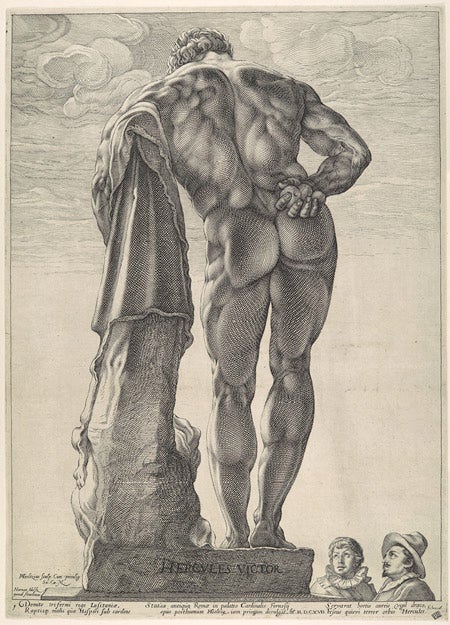
On the more petite site, we had the well-toned ephebes — older teenage soldiers-in-training, whose bums weren’t so overly muscular. (This male ideal also applied to the boy lovers of male gods.) Statues of young men of this era had slender builds, thunder thighs and small perky butts — and super-creepy smiles.
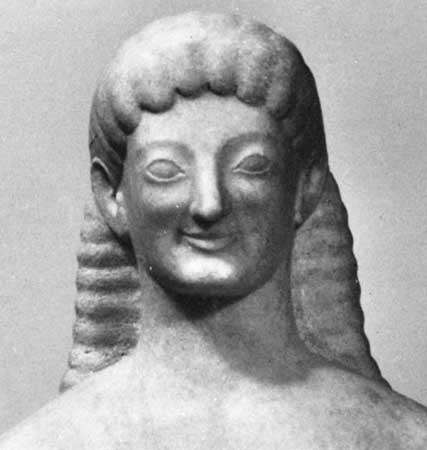
Women were subject to the same standards of ass beauty. Callipygian means “with well-shaped buttocks,” and it is originally an attribute of the goddess Aphrodite. Allegedly, the statue known as Praxiteles Venus was so shapely and sensual that men jerked off both to and on it, defacing it with semen.
That was as horny as the art world got for some time. Soon, Christianity came along and the human form became stylized, the nudity concealed. The situation remained quite drab through the Middle Ages. Finally, with the onset of the Renaissance, scholars, painters and artists rediscovered the proportions of ancient art — and, by extension, scrumptious glutei maximi.
Pederastic Renaissance Florence
Fast-forward to the 15th and 16th centuries. Here, after the neglect for the human form in Medieval art, there was a newly found appreciation for the naked male body. There were plenty of ephebes, like Donatello’s David (c. 1453)…
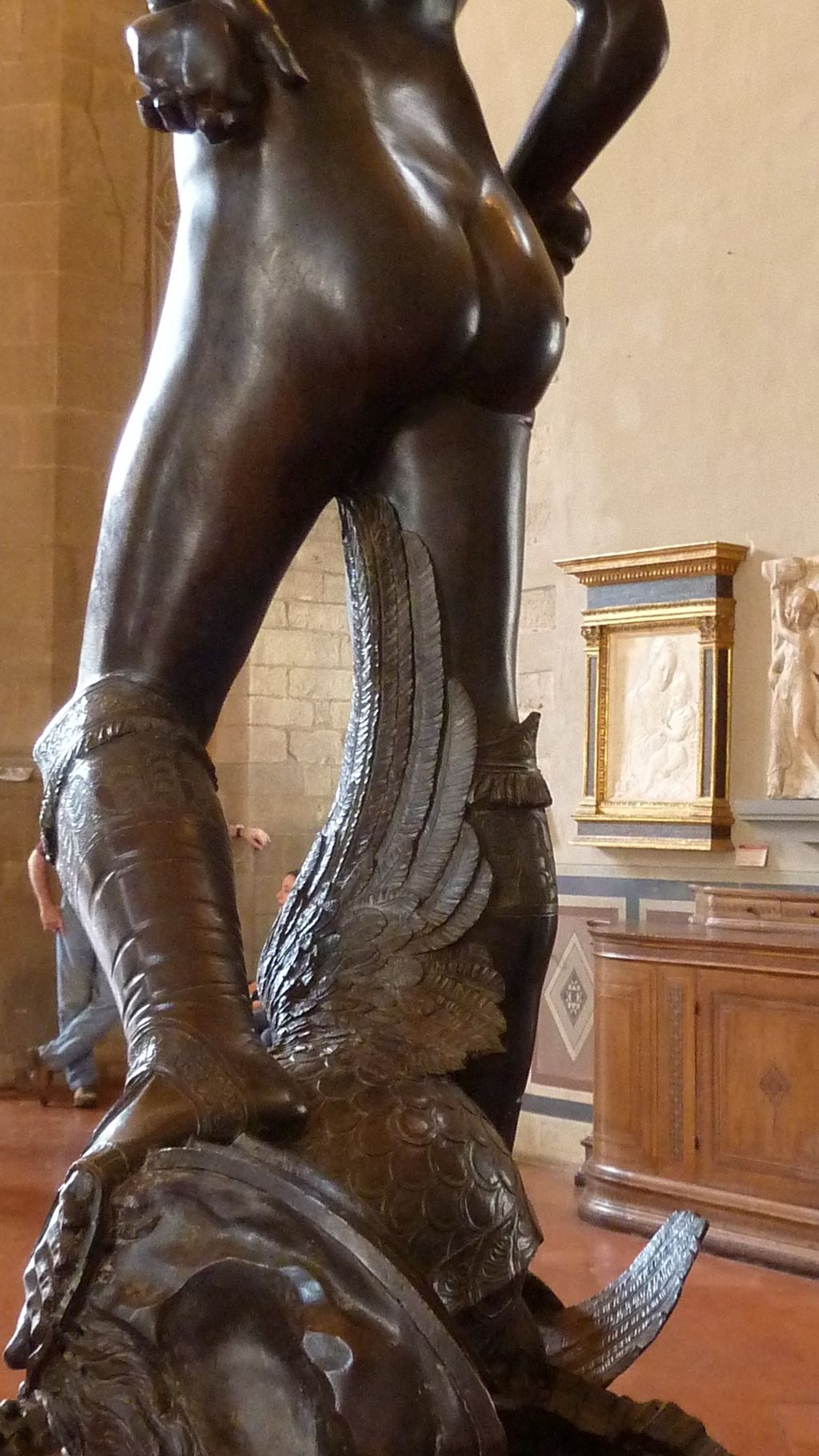
…athletes, like Luca Signorelli’s Figures in a Landscape: Two Nudes (c. 1490)…
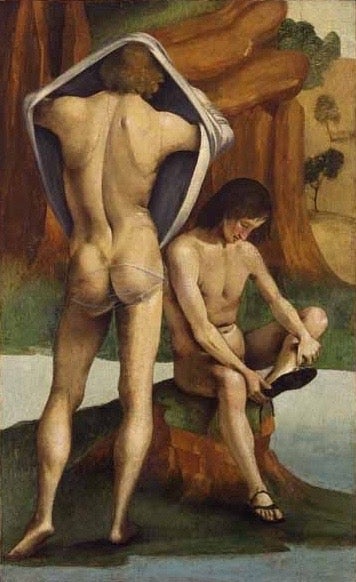
…and a few beefcakes, like Bandinelli’s Herculus and Cacus (1525–34).
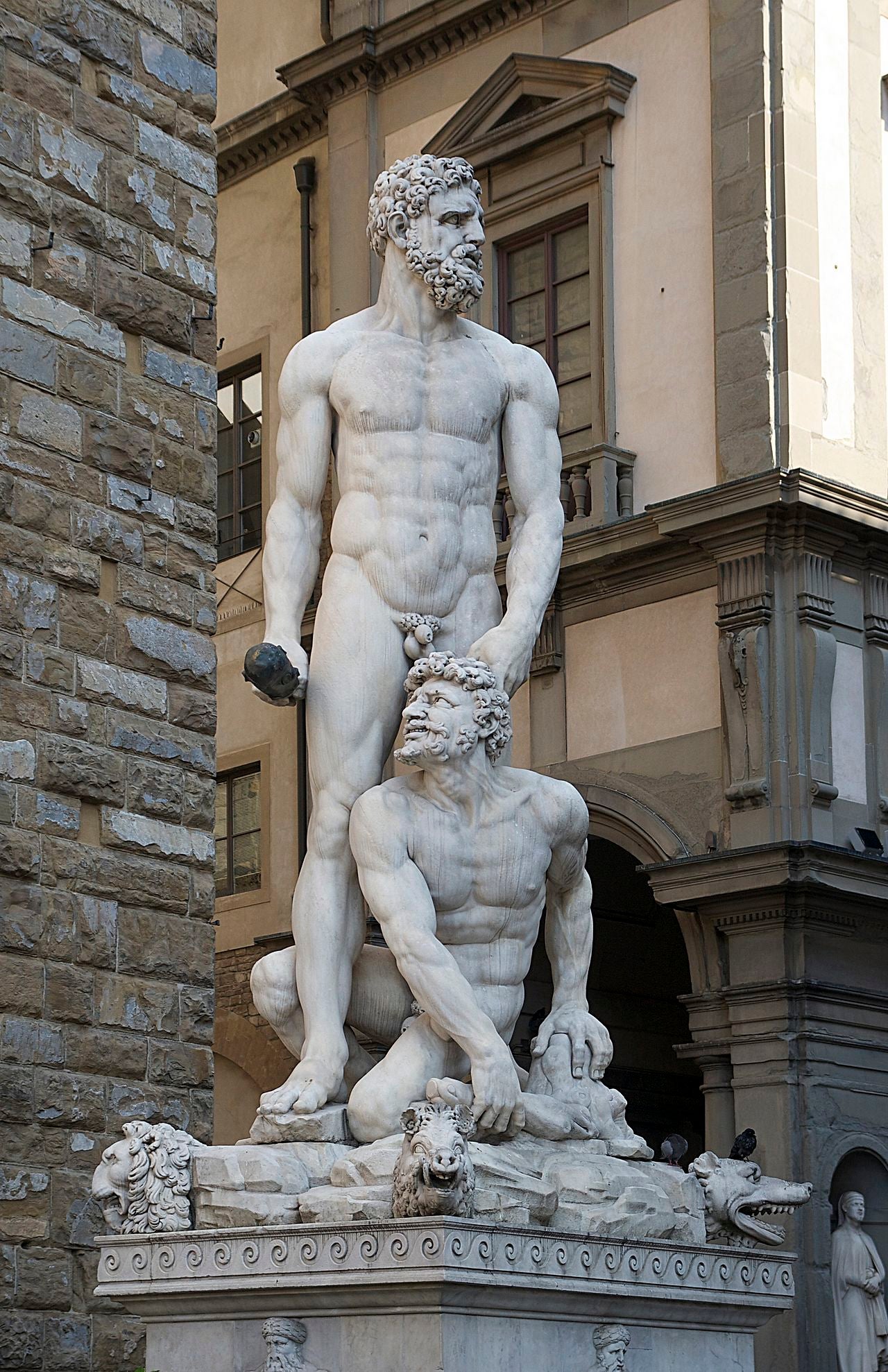
The cradle of peachy derrières, boyish or manly, was Florence — the cradle of humanism and also the normalized sexual abuse of boys. (In German, the term florenzen means “acting like a sodomite.”)
We have to thank Donatello (1386–1466) for reviving the male nude sculpture in the round. His David (seen above) is charged with homoerotic and sexual energy: The plume of Goliath’s helmet lasciviously grazes his inner thigh, so that our attention is all the groin area and his rounded and perky buttocks. Stephen Mack, a Ph.D. candidate and Italian Renaissance expert at Rutgers University, says this David is reflective of the raging pederasty of 15th-century Florence, where extensive court documentations demonstrate how the majority of the city’s males had engaged in homosexual encounters.
Beefcakes didn’t receive much love in Renaissance-era Florence. Hercules and Cacus, seen above, is a 15-foot colossus featuring Herc slaying a monster and flexing his cantaloupe-shaped buttocks. (Art historian Giorgio Vasari once dismissed the work as “a sack of melons.”)
Michelangelo Is the Renaissance Bubble Butt King
Big M. deserves his own spotlight. Sure, other artists were perfectly capable of sculpting and painting asses, but Michelangelo thoroughly assimilated the prototypes of ancient sculpture, studied the hell out of anatomy and had the whole “crazy genius” mystique about him — so we’re all conditioned to credit him for the canon of the ideal body type.
You likely know his David, which — contrary to Donatello’s — is more masculine, almost Apollo-like. Contemporaneous painters worshipped it: We have studies of the rear view of the David from Raffaello, who made it more graceful and relaxed, and from Parmigianino, who made him more slender while maintaining the strong thighs and round butt.
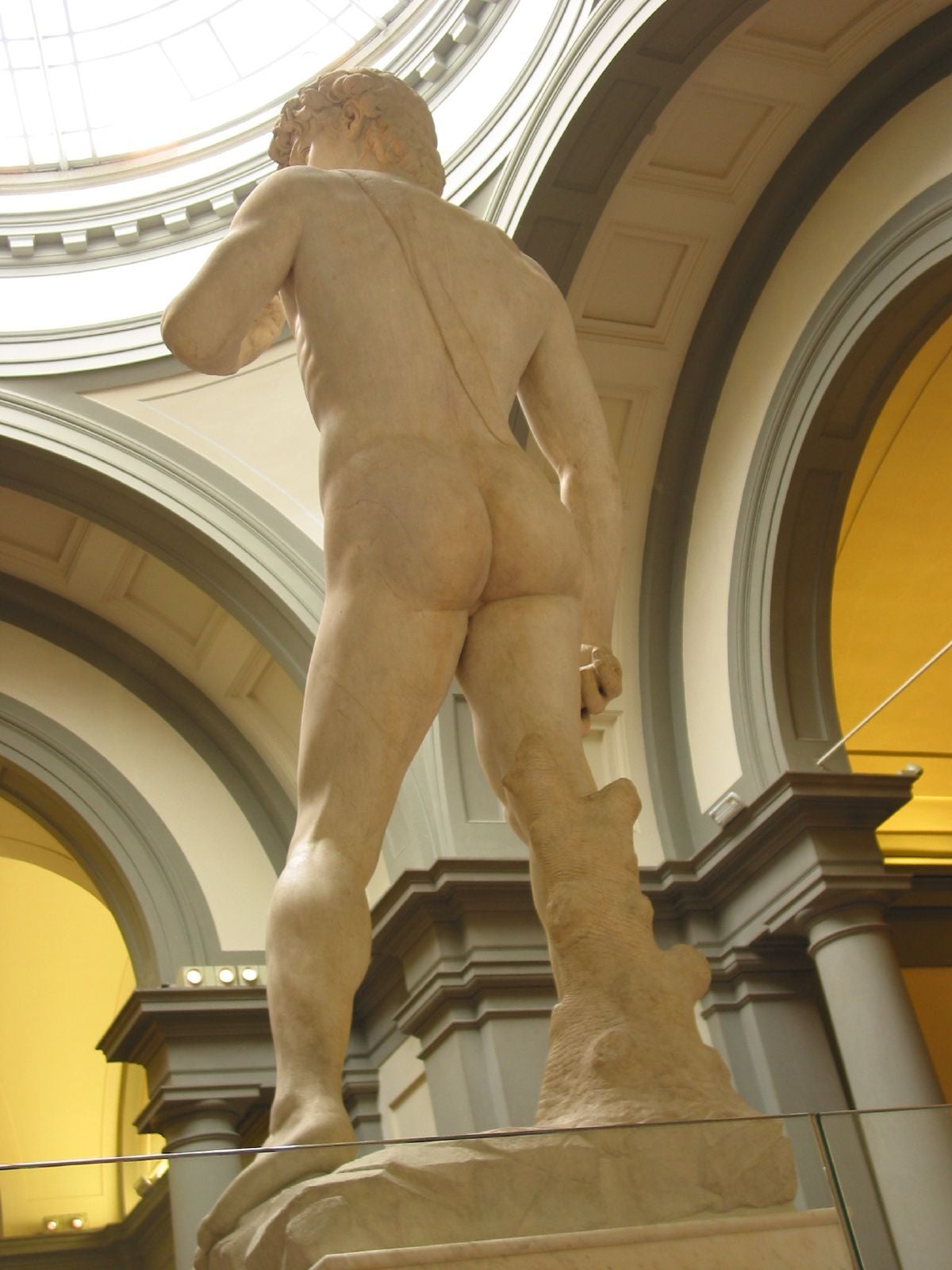
One piece you probably don’t know is his lost cartoon for an unfinished work called the Battle of Cascina. It’s mainly remembered not as a portrayal of battle but as an extraordinary depiction of male beauty, with several male subjects facing away from the viewer. It only exists in copies, like this one, by Michelangelo’s student Aristotele da Sangallo.

Michelangelo’s followers developed a technique whose description by authors Noah Charney and Ingrid Rowland is too good not to quote: It’s marked by “intentional contortions and refusal to adhere to the laws of physics” and looking like “piles of bodybuilders in Day-Glo spandex engaged in an overzealous round of Twister.”
The Neo-Classical Butt Ideal
Baroque sculptors in the 17th century were too preoccupied with showing off their formal mastery to give us great hemispherical buttocks. Even the great sensualist Gian Lorenzo Bernini, who could recreate O-faces (ahegao has nothing on him) and groped flesh, tended to drape his male butts. Sad!
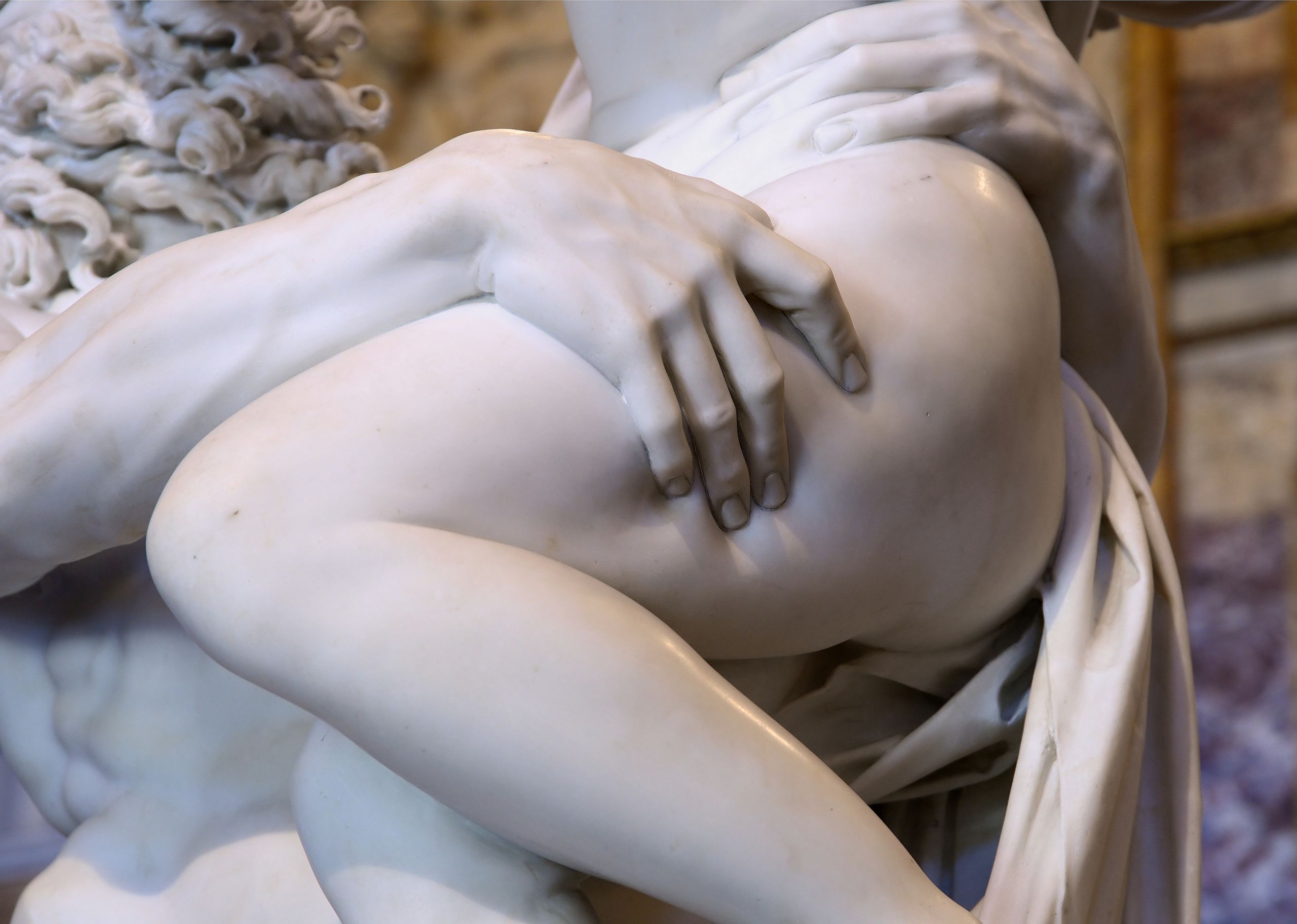
Thankfully, the 18th century gave us Antonio Canova and his male callipygian sculptures. The best example is his Perseus Triumphant, which boasts a fully curved and uplifted derrière. The model for it is Apollo Belvedere, a statue portraying Apollo as a standing archer.
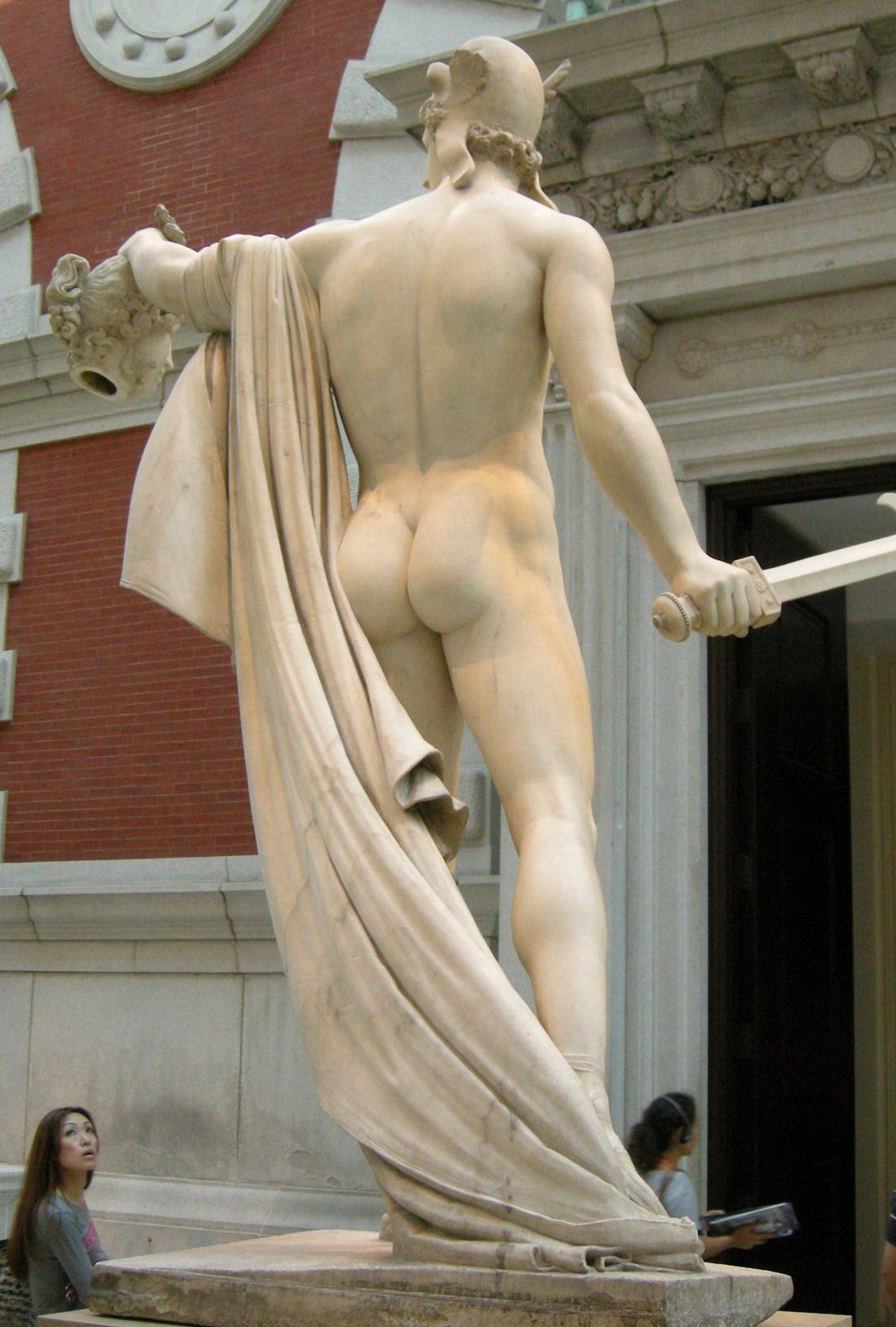
Perseus was beautiful — masculine, athletic and graceful. Maybe too much so. In the book Art, Sex and Eugenics, Fae Brauer describes his influence on “the Western canon of aesthetic and corporeal perfection that was exclusively white.” In the years to come, this classical canon of male beauty would converge with theories of racial dominance — like Nazism and the Aryan master race.
Nazis Loved a Lean Bubble Butt
At this point, evolutionary theorists and “race scientists” became obsessed with butts like Perseus’, which to them represented the ideal male body in terms of racial evolution and sexual prowess.
During the Nazi regime, Nazi-darling sculptor Arno Breker was championed as a healthy antidote to other “degenerate” art, and his statues’ glutei maximi are only a tad leaner than the ones Michelangelo fashioned.
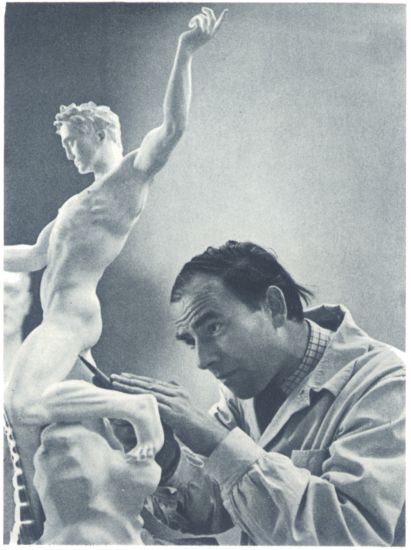
In the Third Reich, sculptures were praised for being able to portray, through the representation of the body in the round, genuine types of German people and Nordic values, such as manual labor and readiness for combat. “The ideal man was to be healthy and strong. … Above all, manliness was always understood in racial terms. If a man was portrayed as virile, then he was by definition not a Jew. And Judaism was linked in Nazi ideology with other threats, including homosexuality,” writes Tim Pursell in “Queer Eyes and Wagnerian Guys.”
Nazis also idolized Männerbund, a form of male camaraderie and a showcase of virility. As homoerotic as all of this might sound, Nazis did not really take issue with what we now clearly see as homoerotic hypermasculinity. What they loathed was effeminacy. A scrawny body (and, by extension, a flabby ass) meant racial inferiority and degeneracy.
Meanwhile, over in the USA, bubble butts managed to remain (mostly) unsullied by political implications…
20th-Century Art Got Gay
Homoerotic art does not equal pornography. The art of George Platt Lynes is inspired both by gay pornography and classical art, and the result is a series of male nudes marked by elegant simplicity and an eroticism even WASPs could get behind.
Photographer Robert Mapplethorpe, in his quest for “perfection in form,” shot nudes that treaded the line between academic figure studies and sexual explicitness. His favorite models included dancer Derrick Cross and model and athlete Ken Moody, who posed in the guise of the Belvedere Antinous.
He also photographed black models, which was novel: We could now add some diverse bubble butts to the canon. Before Mapplethorpe, statuesque bodily perfection was a near-universal celebration of the white male.
Illustrator George Quaintance drew edenic visions of the Wild West that looked more like bathhouses. He liked a classical build; his men were athletic without being overly Herculean, but they have prominent and rounded butts that were slightly elongated.
Then, of course, there’s Tom of Finland, whose sailors and leathermen mostly sport a diminished bubble butt, dwarfed by outsize pecs, shoulders, deltoids and quads.

21st Century: Tumblr and Instagram Revive Physique Photography
After physique magazines shuttered in the early ’90s, artists like Franz Szony, Kevin McDermott and Troy Schoonerman adapted the genre to the Instagram aesthetic: clean lines and a muted palette with the occasional flourish of color. Finally, we see a wide and diverse array of bubble butts, body shapes and skin tones. Today’s artistic ass ranges from lean and athletic to more emphatic curves that almost verge into body-modification territory.
Peach-perfect badonks are everywhere in movies and premium TV. Brad Pitt, Channing Tatum, Game of Thrones dudes and sex-machine Sam Heughan as Jamie Fraser in Outlander. And yes, the Greek ideals still stand. Timothée Chalamet is clearly an ephebe; Roberto Bolle, the marvelous Italian ballet dancer, is an Apollo; Jason Momoa, no doubt, is a Hercules.
Today, the Grecian ideal of male body perfection is alive and well — it’s just thankfully more diverse. It’s moved beyond bathhouses and bodybuilding communities; today, the Badonkadudes are just regular guys. A friend of mine recently told me that we see bubble butts everywhere now because skinny jeans have become an acceptable basic garment for men and because hetero butt stuff has entered everyday sexual parlance.
But that doesn’t mean a great butt has lost the power to stop you in your tracks. Case in point…
The Bubble Butt of Bubble Butts: Tommy Wiseau
For the sake of honesty and thoroughness, let’s not forget one of the key scenes of the 2003 movie The Room: the jacked, leathery and raven-haired Tommy Wiseau, after humping the lead actress’ belly button in an overly extensive love scene, walks bare-assed to the bathroom — apparently, a necessary act. “I have to show my ass or this movie won’t sell,” a fictional Wiseau explains in James Franco’s biopic The Disaster Artist.
Little did Wiseau know that he was referencing one of the longest established canons of art history, placing himself in a millennia-old callipygian tradition.
All images via Wikimedia Commons.

